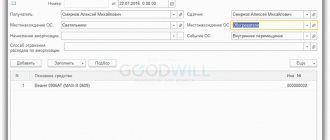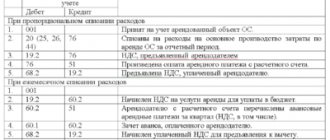With foreign buyers and suppliers, settlements most often occur in foreign currency. A regular current account is not suitable for this, but a foreign currency account is used. Today we will tell you about working with foreign currency accounts from the tax side.
When you contact a bank to open a foreign currency account, the bank always opens a transit foreign currency account for it. Thus, it turns out that you have two foreign currency accounts - transit and current. Initially, all proceeds in foreign currency will go to the transit account; it is intended for the bank to carry out currency control. After which, income from the transit account is transferred to the current foreign exchange account or the currency is sold.
Submit reports in three clicks
Elba is suitable for individual entrepreneurs and LLCs. The service will prepare a tax return, calculate the tax and reduce it by insurance premiums.
Try 30 days free Gift for new entrepreneurs A year on “Premium” for individual entrepreneurs under 3 months
Using currency
The organization has the right to use the acquired foreign currency or foreign exchange earnings at its own discretion. At the moment, the requirement for the mandatory sale of part of foreign currency earnings has been canceled (paragraph 1, part 3, article 26 of the Law of December 10, 2003 No. 173-FZ). Therefore, the organization has the right (but not the obligation):
- sell part or all of foreign exchange earnings (purchased foreign currency);
- use in settlements with non-residents (and in permitted cases with residents);
- purchased foreign currency or foreign exchange earnings received.
This follows from the provisions of Articles 6 and 9 of the Law of December 10, 2003 No. 173-FZ.
For information about what documents need to be drawn up when selling foreign currency and how to reflect such an operation in accounting, see How to reflect the receipt and use of currency and foreign currency earnings in accounting.
Common mistakes in foreign currency accounting
The most common mistake when performing various commodity transactions involving foreign currency is the incorrect determination of the exchange rate from which to base the calculations.
For example, when accepting payment for imported goods, an organization may fall into such a trap - the rate for such calculations must be determined on the day of the accounting entry and according to paragraph No. 9, as well as No. 10 of PBU dated 3/2006. If there was a prepayment condition, then the rate is determined on the day of such posting (making an advance payment for the supplied goods).
In case of reaching non-advance agreements, the exchange rate, on the contrary, is the one that was at the time of transfer of ownership rights to another person.
Another nuance that they forget to indicate, which may later lead to an error, is the failure to take into account the timing and procedure for transferring ownership rights for goods paid for in this way (using currency). There may be the following options: at the time of receipt of the goods itself, at the time of provision of the goods (without delivery), at the time of delivery of the goods, at the time of transfer of the bill of lading (financial document), at the time of transfer to the other party of another document of title, certified and executed properly.
The difference between similar conditions of supply and such commodity-currency cooperation is the presence or absence of taking into account the risk of damage or destruction of the goods at the moment while the transfer process is underway.
BASIC: difference in exchange rates
Both upon receipt and use of foreign currency (foreign exchange earnings), the organization may receive additional income (expenses). These include, in particular:
- differences between official and commercial exchange rates;
- exchange differences;
- Commission of the bank.
When purchasing (selling) foreign currency, an organization may experience a difference between the official and commercial exchange rates. It is formed if the exchange rate at which the bank buys (sells) it differs from the official rate of the Bank of Russia.
When buying a currency, a positive difference arises if the exchange rate at which the bank sold it is lower than the official one. A negative difference occurs if the purchase rate is higher than the official one. When selling currency, the opposite is true.
This follows from the systematic interpretation of the provisions of paragraph 2 of Article 250 and subparagraph 6 of paragraph 1 of Article 265 of the Tax Code of the Russian Federation.
When using currency (foreign exchange earnings), the organization may experience exchange rate differences (positive or negative). They are formed during the revaluation of property in the form of foreign currency values and debt in foreign currency.
For currency received in a foreign currency account and debt to the organization (accounts receivable) in foreign currency, a positive exchange rate difference arises if, on the date of revaluation, the exchange rate to the ruble became higher compared to the date of the previous accounting of funds in the foreign currency account or receivables.
Accordingly, a negative exchange rate difference is formed if, on the date of revaluation, the exchange rate against the ruble has decreased compared to the date of the previous accounting of funds in a foreign currency account or receivables.
For debt to the supplier or buyer (accounts payable) in foreign currency, a positive exchange rate difference arises if, on the date of revaluation, the exchange rate to the ruble became lower compared to the date of the previous accounting of accounts payable. And negative - if the exchange rate to the ruble on the date of revaluation has become higher compared to the date of the previous accounting of accounts payable in foreign currency.
There is an exception to this rule. Exchange differences will not arise if the organization receives (issues) advances. After receiving (issuing) these funds in foreign currency, there is no need to recalculate them due to changes in the exchange rate.
This follows from the provisions of paragraph 11 of Article 250 and subparagraph 5 of paragraph 1 of Article 265 of the Tax Code of the Russian Federation.
The exception for foreign exchange advances does not apply if the advance is subject to return, for example upon termination of the contract. In such a situation, the advance should be reclassified as an obligation of one party to return the previously received amount to the other party. Since the indicated amounts do not fall under the advance payment in its generally accepted meaning, they are subject to revaluation on a general basis. Similar clarifications are contained in the letter of the Ministry of Finance of Russia dated November 2, 2010 No. 03-03-06/1/683.
Include the difference between the official and commercial exchange rates for purchasing (selling) currencies in:
- non-operating income - if a positive difference occurs (clause 2 of Article 250 of the Tax Code of the Russian Federation);
- non-operating expenses - if a negative difference occurs (subclause 6, clause 1, article 265 of the Tax Code of the Russian Federation).
Using the accrual method, reflect these differences on the date of transfer of ownership of foreign currency (subclause 10, clause 4, article 271, subclause 9, clause 7, article 272 of the Tax Code of the Russian Federation). When using the cash method, include the positive (negative) difference in the base on the date of receipt of funds into the organization’s account (clause 1 of Article 273 of the Tax Code of the Russian Federation).
An example of reflection in accounting and taxation of transactions on the sale of foreign currency. The organization applies a general taxation system
Alpha LLC has US dollars in its foreign currency account. Alpha decided to sell them. The amount to sell is $1,000. The exchange rate is conditional.
On February 2, the organization sold currency at the rate of 35.2 rubles. for a dollar. The rubles were credited to the organization's bank account.
When calculating income tax, Alpha uses the accrual method. Income tax is paid monthly.
The US dollar exchange rate on February 2 was 35.4146 rubles. for a dollar.
The bank's commission amounted to 200 rubles.
On February 2, the organization’s accountant made the following entries in the accounting records:
Debit 76 Credit 52 – 35,415 rub. (1000 USD × 35.4146 rubles/USD) – funds intended for sale are debited from a foreign currency account;
Debit 91-2 Credit 76 – 200 rub. – commission fee is withheld by the bank;
Debit 51 Credit 76 – 35,200 rub. (1000 USD × 35.2 rubles/USD) – proceeds from the sale of currency are credited to the current account;
Debit 76 Credit 91-1 – 35,200 rub. – the proceeds from the sale of foreign currency are included in other income;
Debit 91-2 Credit 76 – 35,415 rub. – other expenses from the sale of currency are reflected (including 215 rubles = 1000 USD × (35.4146 rubles/USD – 35.2 rubles/USD) (the difference between the currency sale rate and the Bank of Russia rate)).
When calculating income tax for February, Alpha's accountant took into account 415 rubles. (200 rubles + 215 rubles) as part of non-operating expenses.
Situation: how to reflect foreign currency conversion when calculating income tax? The organization has an account in one currency, and settlements through it are carried out in another currency.
Reflect the differences from conversion as non-operating income (expenses).
Residents can make payments through their bank accounts in any foreign currency, regardless of the foreign currency in which the bank account is opened. If necessary, a conversion operation is performed. For example, if an account is opened in US dollars, but payments need to be made in euros, you can convert from US dollars to euros. For conversion, the rate set by the bank is taken. This procedure follows from Part 7 of Article 14 of the Law of December 10, 2003 No. 173-FZ.
Conversion, in particular, is an operation for the purchase (sale) of one foreign currency for another (Part 7 of Article 14 of the Law of December 10, 2003 No. 173-FZ). That is, in this case, the purchase and sale of foreign currencies occurs.
This means that if, when buying (selling) currency, the commercial cross rate of the bank is more profitable for the organization than the official one, it will generate non-operating income (clause 2 of Article 250 of the Tax Code of the Russian Federation). If the commercial cross-rate is less profitable, the organization must include the resulting difference in non-operating expenses (subclause 6, clause 1, article 265 of the Tax Code of the Russian Federation).
Using the accrual method, reflect the indicated non-operating income and expenses on the date of transfer of ownership of foreign currency (subclause 10, clause 4, article 271, subclause 9, clause 7, article 272 of the Tax Code of the Russian Federation).
With the cash method, reflect the positive (negative) difference on the date of receipt of funds into the organization’s account (clause 1 of Article 273 of the Tax Code of the Russian Federation).
Procedure for acquiring foreign money
In the Russian Federation, foreign currency is purchased by organizations according to the following rules:
- Purchase transactions are carefully regulated by official authorities (the Government of the Russian Federation, the Central Bank of the Russian Federation).
- There are no restrictions on the monetary amounts of foreign exchange transactions carried out between entities.
- Transactions in foreign currency are not carried out between Russian residents (certain exceptions to this rule are provided for by separate norms of current legislation - 173-FZ, Article 9, paragraph 1, subparagraphs 1-24).
- The purchase of foreign currency money can be carried out exclusively through authorized financial institutions (banks).
- Opening foreign currency accounts in relevant banks is a mandatory condition for residents wishing to both buy and sell currency. There are no restrictions on opening such accounts for most residents.
- Information on opening and closing a bank account in a foreign currency, as well as changes in its details, must be submitted by residents to the tax service within a month.
- Bank foreign currency accounts are opened without restrictions by non-residents in Russian financial institutions.
- In relation to the organization's foreign currency assets, the necessary revaluation is carried out on the date of preparation of the financial statements, on the date of the currency transaction, as well as in cases where the exchange rate of the relevant currency changes.
The difference in exchange rates identified during revaluation is adequately recorded in accounting (relates to other income/costs).
The general algorithm for purchasing foreign currency looks like this:
- To purchase the required amount of foreign currency, the corresponding amount of money (in rubles) is transferred to the bank from the organization’s current bank account.
- The transferred funds are temporarily recorded in accounting records in a special transit account.
- When the financial institution does execute the client’s order (after some time), the purchased currency is credited to the legal entity’s foreign currency account while simultaneously closing the transit account.
- Using the money transferred from the client’s current bank account, the financial institution purchases the required amount of foreign currency for the business entity, crediting it to the organization’s account in foreign currency. In accounting, currency funds are always recorded in rubles; the corresponding conversion is carried out at the current exchange rate of the Central Bank of the Russian Federation.
- Accounting for the receipt of purchased currency with conversion into domestic rubles at the current exchange rate of the Central Bank of the Russian Federation and proper reflection of positive and negative exchange rate differences.
- The funds that remained in the transit (temporary) account after purchasing the required amount of foreign currency are returned back, that is, they are again credited to his bank account.
- When purchasing a specific amount of foreign currency based on a client’s application, the servicing bank, as a rule, charges (withholds) the appropriate commission from the applicant. Such a commission is often paid by transfer from the current bank account of the business entity.
All of the above actions are properly recorded in the organization’s accounting records. If previously there was a mandatory sale of a certain part of the available purchased currency, now such a requirement is no longer in effect.
Procedure for selling foreign currency.
BASIC: revaluation of property and liabilities
The difference from the revaluation of property in the form of currency values and debt in foreign currency (including for an advance that is subject to return) arises and is taken into account in tax accounting depending on the method that the organization uses: accrual or cash.
If the organization uses the accrual method, then the received currency and the debt to the buyer (supplier) in foreign currency must be converted into rubles at the Bank of Russia exchange rate on the earliest date:
- date of transaction in foreign currency (for example, repayment of debt in foreign currency);
- last day of the current month.
This rule is provided for in paragraph 8 of Article 271 and paragraph 10 of Article 272 of the Tax Code of the Russian Federation.
Positive and negative exchange rate differences arise from the revaluation of currency and foreign currency debt. Reflect positive exchange rate differences in non-operating income, negative ones in non-operating expenses.
This is stated in paragraph 11 of Article 250 and subparagraph 5 of paragraph 1 of Article 265 of the Tax Code of the Russian Federation.
The date of recognition of non-operating income and expenses in the form of exchange differences is the earliest of the following dates:
- date of transaction in foreign currency (for example, repayment of debt in foreign currency), transactions with precious metals (including on unallocated metal accounts);
- the last day of the current month in which the revaluation was made.
This is established by subparagraph 7 of paragraph 4 of Article 271 and subparagraph 6 of paragraph 7 of Article 272 of the Tax Code of the Russian Federation.
An example of how to reflect in accounting and taxation the acquisition of goods under an agreement in which the price of goods is expressed in foreign currency and payment for them is made in foreign currency. The organization applies a general taxation system
Alpha LLC entered into a supply agreement with Torgovaya LLC. Under the agreement, Hermes supplies Alpha with goods worth $100,000. Settlements under the agreement are carried out in foreign currency (US dollars). Hermes is not a resident of Russia.
The agreement provides for an advance payment form. According to the terms of the agreement, Alpha transfers an advance in the amount of 50 percent of the total payment amount ($50,000) to the Hermes account on February 2. Hermes ships goods to Alpha on February 9. Alpha transfers the remaining amount of the debt to Hermes on February 16. Title to the goods passes on the date of shipment (February 9).
The US dollar exchange rate was conditionally:
- on February 2 – 35.4146 rubles/USD;
- on February 9 – 36.3798 rubles/USD;
- as of February 16 – 34.5578 rubles/USD.
Alpha's accountant reflected the transactions under the contract in the accounting records as follows.
February 2:
Debit 60 Credit 52 – 1,770,730 rub. (USD 50,000 × RUB 35.4146/USD) – advance payment is transferred to the seller.
February 9th:
Debit 41 Credit 60 – 3,589,720 rub. (USD 50,000 × RUB 35.4146/USD + USD 50,000 × RUB 36.3798/USD) – goods have been capitalized.
February 16:
Debit 60 Credit 52 – 1,727,890 rub. (USD 50,000 × RUB 34.5578/USD) – the remaining amount of debt to the seller has been repaid;
Debit 60 Credit 91-1 – 91,100 rub. (50,000 USD × (36.3798 rub./USD rub. – 34.5578 rub./USD)) – positive exchange rate difference is reflected in income.
When calculating income tax, Alpha uses the accrual method.
On February 16, Alpha’s accountant included a positive exchange rate difference in the amount of 91,100 rubles in non-operating income in tax accounting. (USD 50,000 × RUB 36.3798/USD – USD 50,000 × RUB 34.5578/USD).
If an organization uses the cash method, then about the order in which to recalculate the currency received and the debt to the buyer (supplier) in currency, as well as reflect exchange rate differences, see How to take into account income and expenses using the cash method when calculating income tax.
Results
As such, there is no tax on currency exchange transactions in the Russian Federation yet. The legal norms imply the obligation of resident individuals to declare and pay personal income tax on transactions with currency, if income was received as a result of such transactions. But in practice, this norm has not yet been practically implemented, since there is no working procedure for calculating, paying and confirming personal income tax amounts from transactions with currency, and there is also no control mechanism for the implementation of this norm by the Federal Tax Service.
NOTE!
For the purposes of this article, “resident of the Russian Federation” should be understood as “tax resident of the Russian Federation,” since we are talking about taxation according to the norms of the Tax Code of the Russian Federation. You can find more complete information on the topic in ConsultantPlus. Free trial access to the system for 2 days.
simplified tax system
Include received foreign currency earnings or advances in foreign currency as income. The amount of such income should be reflected in rubles at the Bank of Russia exchange rate on the day when the currency was credited to the transit currency account.
This procedure follows from paragraph 1 of Article 346.17 and paragraph 3 of Article 346.18 of the Tax Code of the Russian Federation and is explained in letters of the Ministry of Finance of Russia dated January 22, 2015 No. 03-11-06/2/1645 and dated January 27, 2012 No. 03-11- 06/2/10.
Positive (negative) exchange rate differences arising in accounting in tax accounting using the simplified tax system do not need to be determined. Just as there is no need to reflect them in the book of income and expenses. This follows from the provisions of paragraph 5 of Article 346.17 and paragraph 3 of Article 346.18 of the Tax Code of the Russian Federation.
Situation: how to take into account the sale of foreign currency earnings under the simplified tax system?
Include in income only the positive difference between exchange rates. Do not reflect negative differences in expenses.
Transactions related to the circulation of Russian or foreign currency (except for numismatic purposes) are not recognized as sales of goods. And if so, then there will be no income from sales when selling currency. This directly follows from the provisions of subparagraph 1, paragraph 3 of Article 39 of the Tax Code of the Russian Federation.
At the same time, if the currency is sold at a rate higher than that set by the Bank of Russia, include only the positive difference between rates in non-operating income (clause 1 of Article 346.15 and clause 2 of Article 250 of the Tax Code of the Russian Federation).
What if the currency selling rate is lower than the Bank of Russia rate? Then do not include negative exchange rate differences in expenses. After all, such expenses are not mentioned in Article 346.16 of the Tax Code of the Russian Federation.
Similar conclusions follow from the letter of the Ministry of Finance of Russia dated August 28, 2015 No. 03-11-09/49620 (brought to the attention of the tax inspectorates by letter of the Federal Tax Service of Russia dated September 15, 2015 No. GD-4-3/16204).
It should be noted that previously the financial department took a different position. The letter of the Ministry of Finance of Russia dated January 22, 2015 No. 03-11-06/2/1645 stated that rubles received into the current account from the conversion of foreign currency earnings must be included in income in the full amount. The department argued its position by saying that converting currency into rubles is nothing more than the purchase and sale of goods. However, with the release of the letter of the Ministry of Finance of Russia dated August 28, 2015 No. 03-11-09/49620, the previous clarifications seem irrelevant.
Is there a tax on foreign exchange transactions in the Russian Federation?
Direct transactions with currency, cash or non-cash, are not subject to any special tax in the Russian Federation. Moreover, judging by the trends in the further formation of currency legislation in the country, we cannot expect the appearance of such a tax in the near future.
For more information about what to expect, read: “Changes in currency legislation since 2017.”
The tax on foreign exchange transactions refers to the income tax of individuals payable to the budget at the end of the past year. For example, if an individual purchased dollars at a rate of 50 rubles per dollar, and then exchanged them for rubles at a rate of 70 rubles per dollar, then this person received income in ruble equivalent. According to the current legislation, an individual must declare and pay personal income tax from such income to the budget for the year in which he made a profitable operation.
Let's look at the reasons for this.







